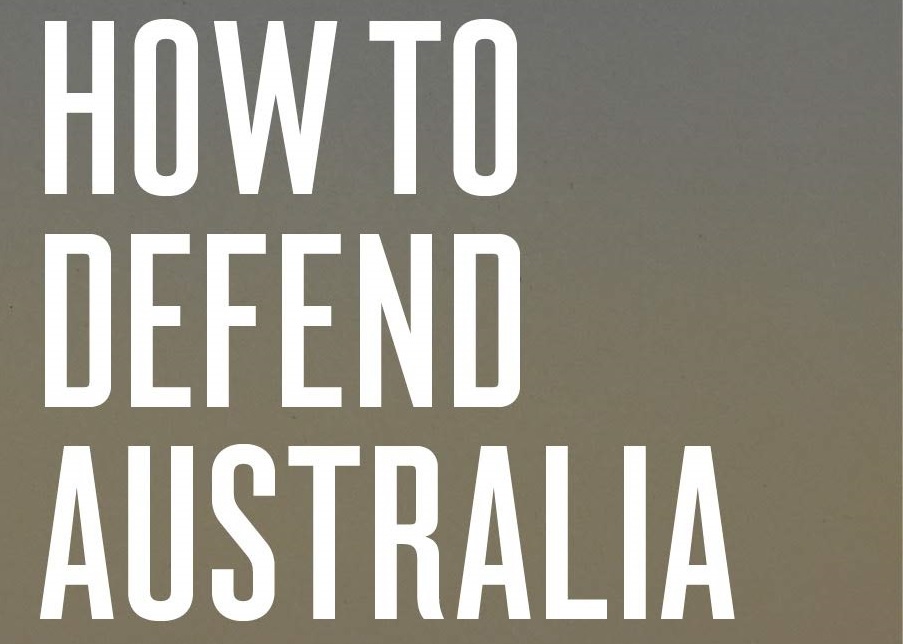
You don’t have to be as pessimistic as I am about the future of American power in Asia to start seriously thinking about what we should do if it falters. You only have to accept that we can no longer simply assume that America will, 20 or 30 years from now, be there to prevent any major power from attacking us, or defend us if it did.
That means we should consider, more seriously than we ever have before, whether we can defend ourselves from a major power—like China, or a much stronger Indonesia—without relying on America.
Most people assume that we can’t, but we have never really explored the question seriously, because we haven’t needed to. Now we do, and that poses a new and unfamiliar challenge to Australian defence policy. It has never been very hard for Australia to afford forces adequate to defend ourselves against a weak middle power like Indonesia has been, or to undertake modest stabilisation operations and make small contributions to US-led coalition operations. That means we haven’t had to make tough choices about the kinds of forces we need.
But defending ourselves independently against a major Asian power like China is a very different matter. It is the most ambitious and demanding strategic objective we have contemplated for our forces since World War II. If it is possible at all it would stretch our resources to the limit. We must therefore be much more stringent in deciding what capabilities to invest in, which means our force planning needs to be much more rigorous than it has been for many decades.
My new book, How to defend Australia, suggests how we might do that, and where it might lead us. I start with the obvious but nonetheless elusive principle that we cannot decide what forces we need until we have identified what we want them to be able to do—in other words, until we have defined our core strategic objectives.
I think the well-established ‘concentric circles’ model of strategic interests remains the best basis for doing this. Hence I propose that our core strategic objectives, in descending order of priority, should be to defend the continent and the islands closest to it independently from direct attack by a major Asian power; to contribute substantially to the collective defence of maritime Southeast Asia, especially Indonesia; and to contribute more modestly to the preservation of a balance of power in the wider region.
The next step is to decide what kinds of operations could most cost-effectively achieve those strategic objectives—in other words, develop a military strategy—to guide our force planning. This is an essential step, but not one that we have done very well hitherto. The key to doing it better is that phrase ‘most cost-effectively’. It’s easy to list the kinds of operations we could undertake in pursuit of our strategic objectives, but we need to go further and decide which ones would be most cost-effective; that is what we must do if we are to achieve our objectives as cheaply as possible.
A glance at a map affirms that our best operational options are going to be maritime, but to identify what kinds of maritime operations we should prioritise we need to think carefully about the nature of maritime warfare over the decades to come. I argue that enduring technological and operational factors make maritime control very hard to achieve against major adversaries, and maritime denial relatively easy.
I also argue that, thanks to the geography of our country and our region, we can achieve our core strategic objectives without needing to achieve maritime control. Hence maritime denial operations are much more cost-effective for us than maritime control. We can and should adopt a military strategy of maritime denial.
This has important implications. It means we do not attempt to protect our sea lines of communication by defending our own ships, but only by being able to attack the shipping of others. It also means we forego the option of projecting land or air power by sea against major adversaries. These are important limitations, but they must be balanced against the blunt reality that no matter how much we spend, Australia has little or no chance of achieving operationally significant degrees of maritime control against capable maritime forces in the decades to come.
These conclusions have big and disconcerting implications for our force design. Clearly, we must give priority to the capabilities that can most cost-effectively achieve the operational outcomes which can most cost-effectively deliver our core strategic objectives. In the book I spell out what that means in some detail. There are some very tough and unpopular choices to be made.
A strategy of maritime denial means much assigning lower priority to major surface warships and amphibious assault forces, and much higher priority to anti-shipping surveillance and strike. It means a limited role for the army beyond the continent, a much bigger submarine force, and a bigger fleet of fighter aircraft. It poses immense challenges for support, sustainment and access to technology. And it raises the question of whether we might need to consider building nuclear forces in the future, and if so what kind of forces they might be.
And finally, of course, there is the question of cost. I offer a very broad estimate that we would need to spend 3.5% of GDP—4% with nuclear weapons—to build and maintain the forces which we would need to achieve the strategic objectives I have proposed over the decades ahead. That is the price of being able to defend ourselves independently if, or when, we can no longer rely on America as we have done for so long. So it may not be true that we can’t defend ourselves without America, but it would cost a lot. We just have to decide whether it would cost too much.
How to defend Australia is published by La Trobe University Press in conjunction with Black Inc.

